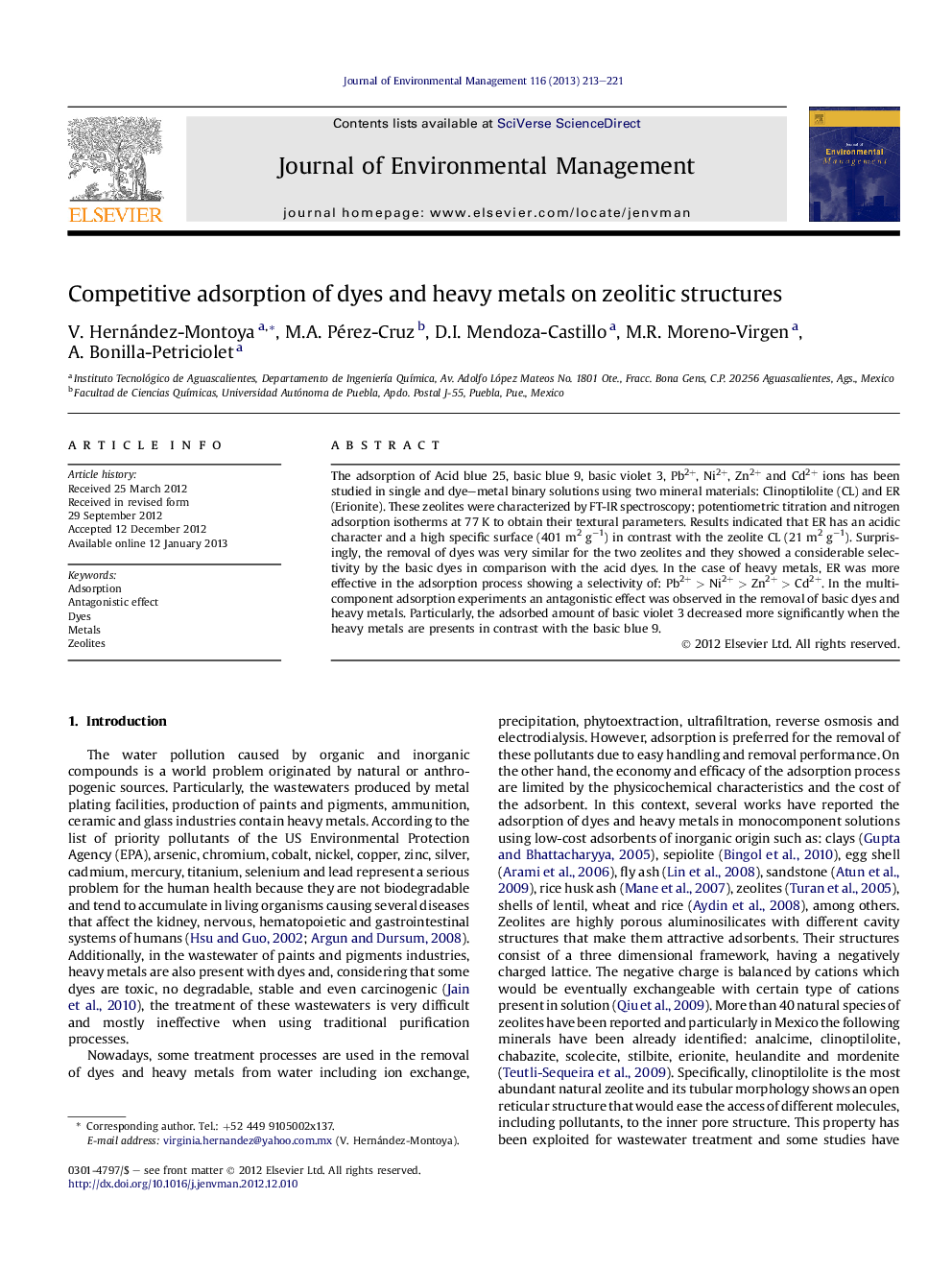| Article ID | Journal | Published Year | Pages | File Type |
|---|---|---|---|---|
| 1056398 | Journal of Environmental Management | 2013 | 9 Pages |
The adsorption of Acid blue 25, basic blue 9, basic violet 3, Pb2+, Ni2+, Zn2+ and Cd2+ ions has been studied in single and dye–metal binary solutions using two mineral materials: Clinoptilolite (CL) and ER (Erionite). These zeolites were characterized by FT-IR spectroscopy; potentiometric titration and nitrogen adsorption isotherms at 77 K to obtain their textural parameters. Results indicated that ER has an acidic character and a high specific surface (401 m2 g−1) in contrast with the zeolite CL (21 m2 g−1). Surprisingly, the removal of dyes was very similar for the two zeolites and they showed a considerable selectivity by the basic dyes in comparison with the acid dyes. In the case of heavy metals, ER was more effective in the adsorption process showing a selectivity of: Pb2+ > Ni2+ > Zn2+ > Cd2+. In the multicomponent adsorption experiments an antagonistic effect was observed in the removal of basic dyes and heavy metals. Particularly, the adsorbed amount of basic violet 3 decreased more significantly when the heavy metals are presents in contrast with the basic blue 9.
► Adsorption of dyes and heavy metals was studied in single and dye–metal solutions. ► Two natural zeolites: Clinoptilolite and Erionite were used as sorbents. ► The zeolites are more efficient to remove cationic dyes. ► In dye–metal binary solutions one antagonistic effect was observed in the adsorption of dyes and heavy metals.
